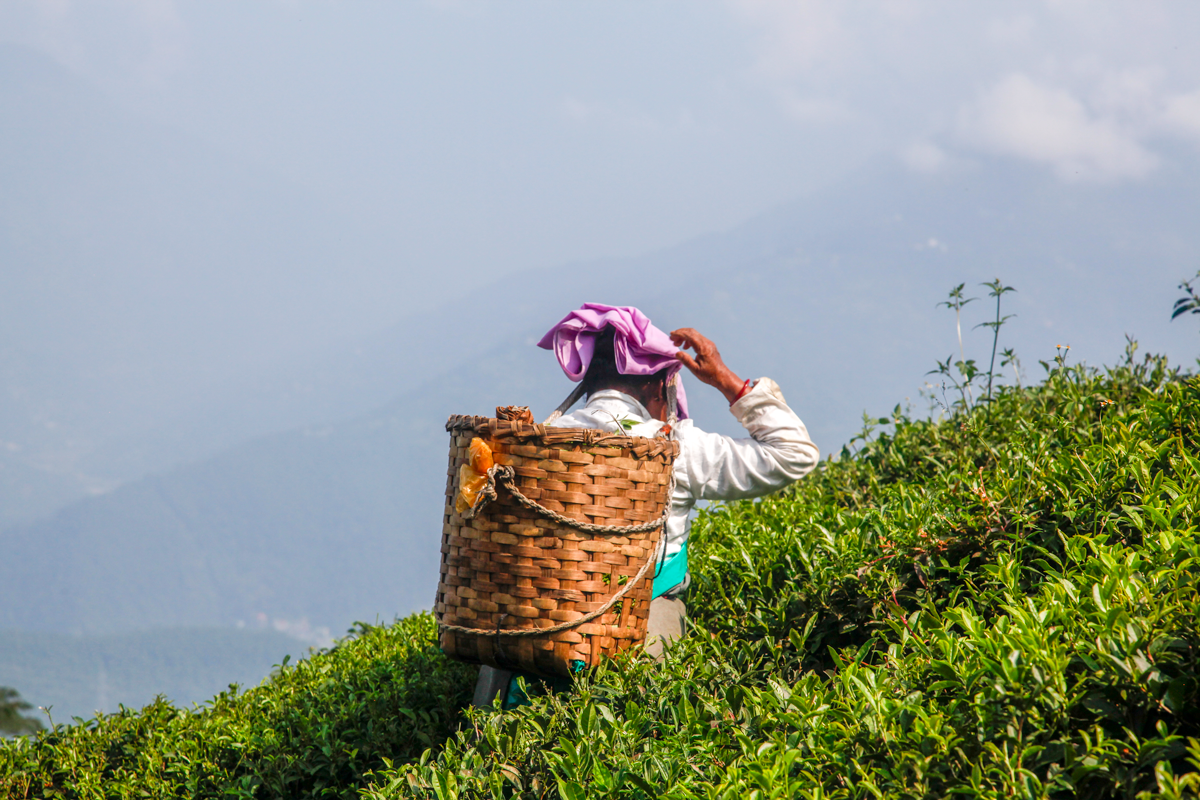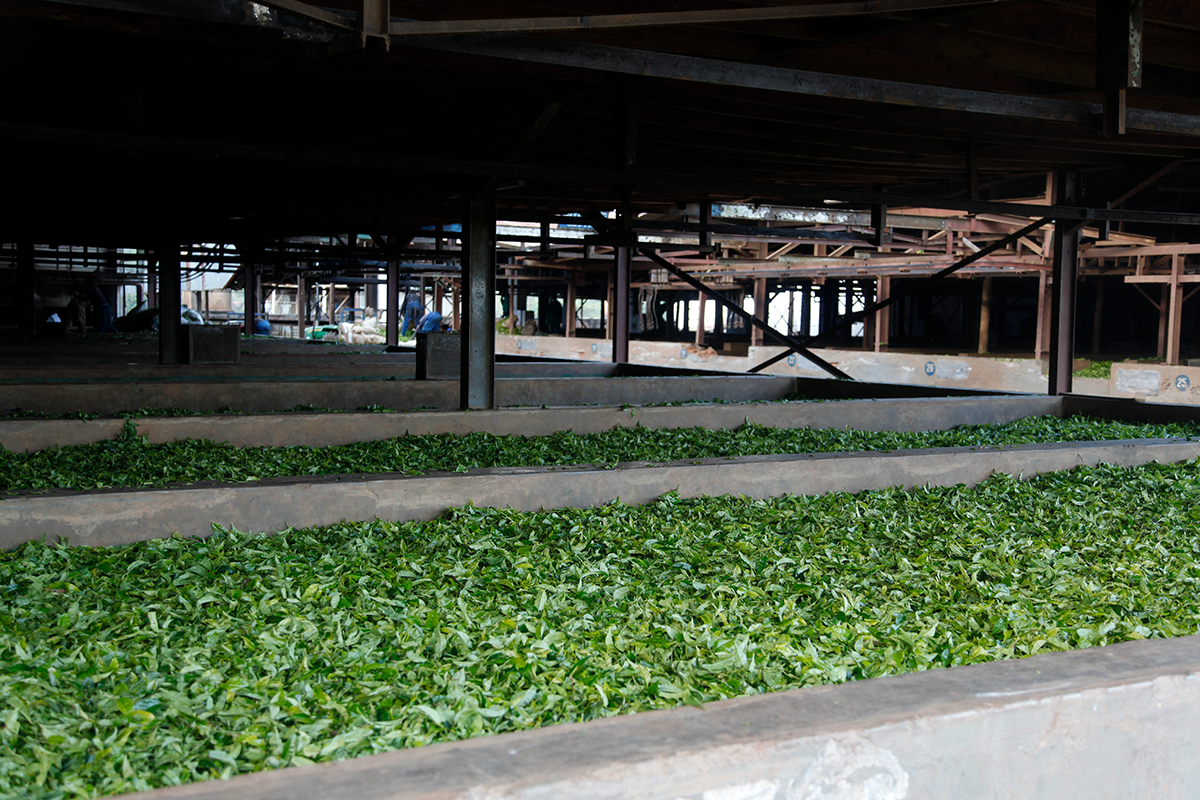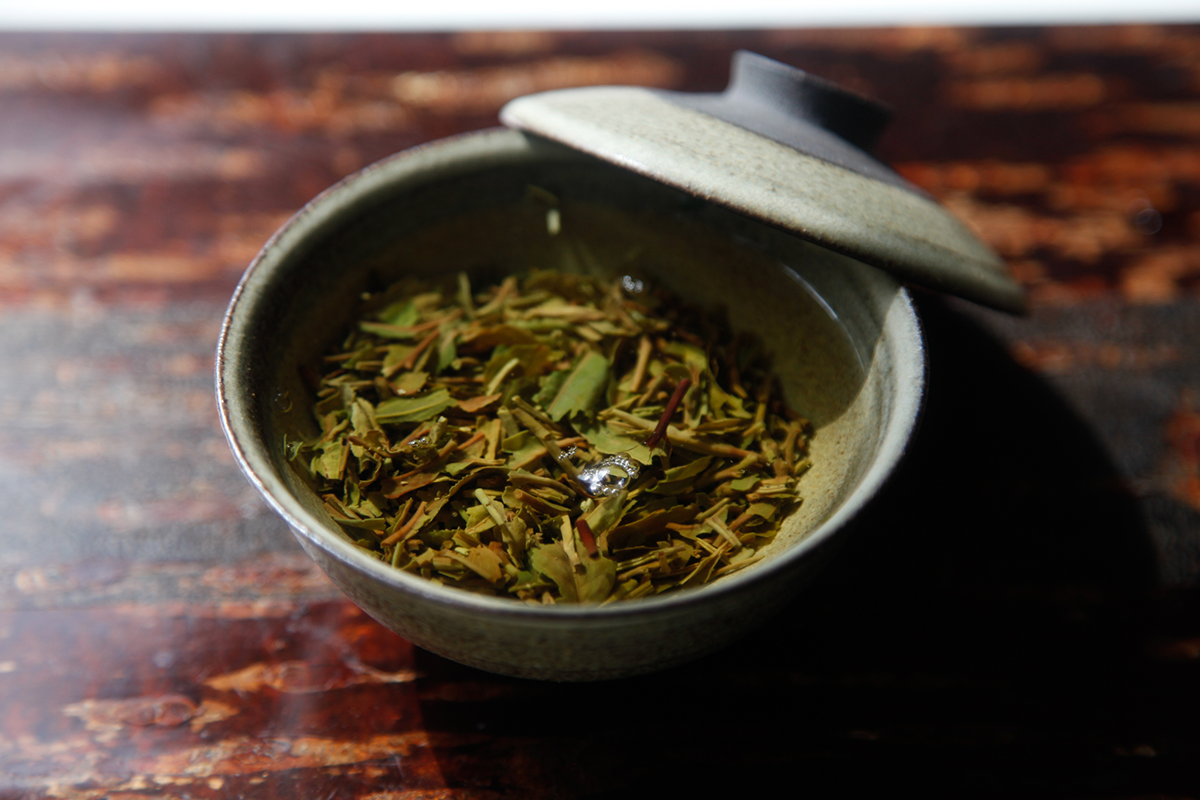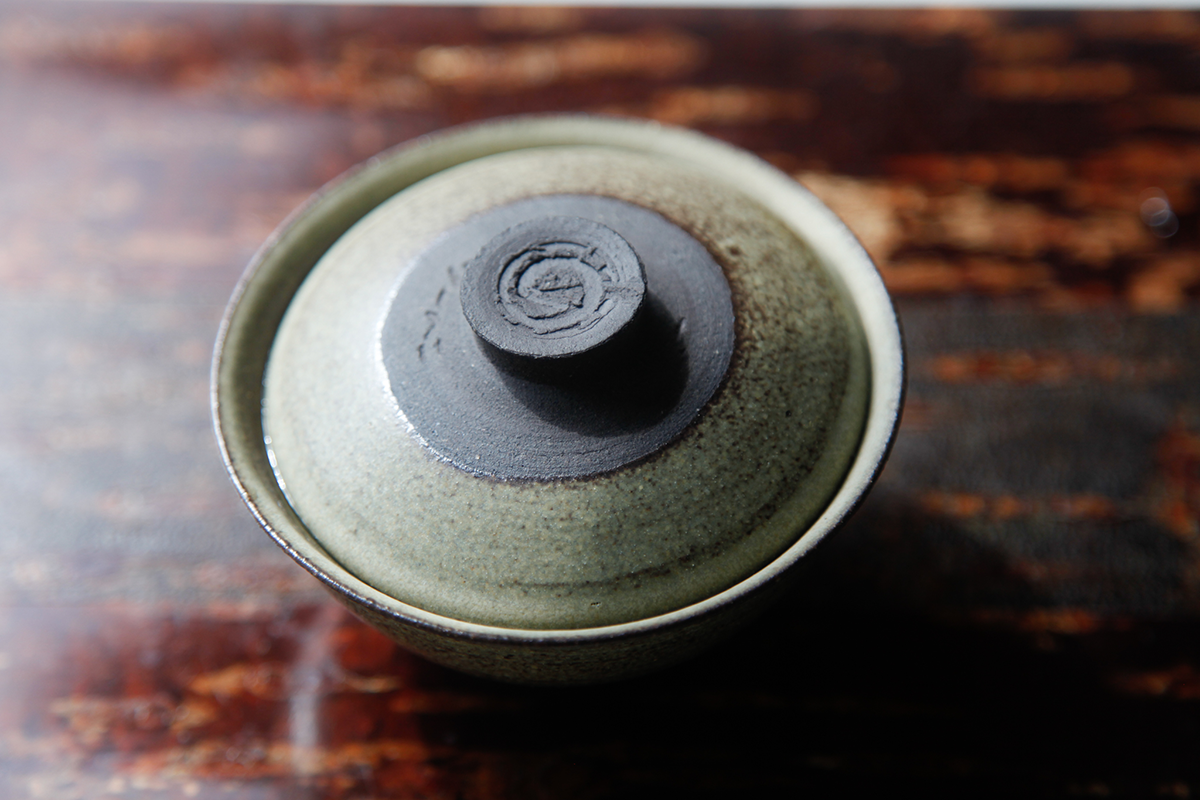All over the world, men and women work the land. When you’re right there with them, you realise just how hard their work is. Spending time with them makes you aware of how they live. It reconnects you with what’s important. Above all, it makes you want to talk about them, to highlight what they do, what they harvest, what they know. In short, to support them. Here, for example, we’re working with people to help them produce teas that are more flavourful and interesting. These teas will earn them more money. This will help them to live better lives, to raise their children more easily and to benefit from better healthcare. They will be able to look ahead with more confidence and thus protect the future of this good way of working the land.
Inspirations
Preparing for tea
Brewing tea isn’t the same as preparing for tea. While I brew my tea, I prepare myself for it. I slow down and take time to breathe. I let go of any worries and feel lighter. I focus my attention on a favourite object, a positive emotion or a beautiful view, like this one. A view of a garden. While my tea brews, and as I sip it, standing upright yet relaxed, it soothes me.
Tea calms us
Sometimes I think about what tea does for me. Why does it make me feel so good? Today, I’ve been looking through my photos to inspire my thoughts. I came across this one, taken on the banks of the Ganges. When I look at it, I feel the same sense of calm that I get when I drink my favourite beverage. This photo has helped me to define how I benefit from tea. It calms me. When I make myself a cup of tea and hold it in my hands, I relax. I close my eyes, concentrate and feel free. I detach myself from things, break the invisible bonds that constrain me. Like this silhouette, this man-bird embracing the sky, free from gravity. Tea is an invitation to be calm.
Men at work
These days, it’s often women who pick tea on the plantations established by the British in India, Sri Lanka and various East African countries. But our British friends are long gone. And while the practices they introduced live on in many tea-growing regions, the fact remains that when left to their own devices, like here, between the Ganges and the Brahmaputra, the growers divide up the tasks as they see fit. It’s good to see men in the fields, and it’s good not to hear the same old rubbish about women’s hands being more delicate, more agile. What nonsense! Even the people I’m photographing think it’s a joke. Let’s end 2023 on a high note, and I’ll see you back here next year!
A lifetime
I will spend my life photographing the people who work with tea. Observing them, loving them, walking beside them, sitting next to them. Paying close attention to their every move. Waiting for the right light. Saying a few words in their language, if I can. Finding things to share. Or just staying silent and taking in all the air I can into my lungs, then even more, and feeling that air circulate around my body.
I will spend my life photographing people looking at me, people blushing or laughing. People who want more, who rush over to see the screen of my camera when I’ve taken a photo. And others who are more distant. I walked behind this woman carrying a full basket for a long time, trying to capture her attention, but she turned her back on me and walked away.
Zen garden
In Japan, a very orderly country, the tea bushes are tended in the neatest rows. They form a kind of Zen garden, and in Kyoto and many other parts of the archipelago, whenever you see them you just want to sit down and take it all in. The aesthetic is captivating.
A very classy tea
In Britain, tea is a ritual, or rather, rituals. There is breakfast tea to start the day, and later on, the much-loved tradition of afternoon tea. The latter is more of a meal than a beverage: the tea itself is important, but even more so is the setting, the quality of the china, and the accompanying cucumber sandwiches, cakes and scones with jam and whipped cream. The Duchess of Bedford started this tradition at the beginning of the nineteenth century. In those days, people ate their lunch early and their evening meal late, and the Duchess grew hungry later in the day. She began to ask for food to be served with her cup of tea in the afternoon. This soon turned into a sophisticated social occasion, a tradition that lives on across the country. Afternoon tea at one of London’s prestigious addresses will satisfy even the biggest appetites in the most refined surroundings complemented by discreet service. It is a social ritual of etiquette. A very classy tea indeed.
Worthy withering
Withering is essential for the production of many teas. During this stage, the camellia leaf, which starts out being 80% water, gradually loses its moisture. French people often ask what the word fletrissage, for withering, means, as it is rarely used in our language. However, it appears in the most famous monologue in Corneille’s play, Le Cid, albeit in a different context, as Corneille is referring to withering laurel leaves. Moreover, far from adding value to the wreath on Don Diègue’s head, their withering signifies the loss of a proud appearance, a kind of dishonour.
But tea is not theatre. We have never heard anyone lament the withering of tea leaves and declaim: “O rage! O despair!”
Live free!
The gaiwan works as follows: after placing a large quantity of leaves in it, equivalent to around a third of its volume, the water is poured in. The first – short – infusion is poured into a “fairness cup” or directly into the drinking cups, and is followed by a second and then a third infusion.
The leaves are completely free during this series of brief infusions. Watch them unfurl. They are at home in water. Have you ever looked at tea leaves as they infuse? Have you ever seen them so relaxed? The gaiwan is not just a vessel for brewing tea, it’s a spectacle in itself. The object is beautiful, and the leaves inside are beautiful as they infuse. When we gently lift the lid, we can admire their colour, their shape, the way the water brings them back to life. And, of course, we can appreciate the aromas that emanate from them, which we can smell by lifting the inside of the lid to our nose.
The simplicity of the gaiwan
Apart from the tasting set, which is sometimes used by professionals, there are different ways of brewing tea. In China there is the zhong or gaiwan; in Japan the shiboridashi or kyusu. In the West, the most commonly used vessel is the teapot. But why not explore lesser known objects? Today, I would like to talk to you about the gaiwan. It’s a very simple thing, consisting of a kind of bowl with a lid. Let’s take a look at it from the outside while the tea is brewing inside. The beauty of the gaiwan lies in its radical simplicity. What is the principle of brewing tea? It involves bringing the tea leaves into contact with water. As the leaves unfurl, they release their aromas and other elements. I can’t think of a better place to brew tea leaves than in this remarkable object. I could show you the inside of the gaiwan right now, but I’d rather wait. What I enjoy most while my tea is brewing is appreciating the vessel in which it’s brewing: its colour, the way the changing light plays on its surface, its material. I observe the roughness of the clay and my contemplation transports me to distant landscapes. This gaiwan was made in the Périgord region of France by a talented ceramist, Manon Clouzeau. Let’s have another look at our tea brewing under this delicate lid, which is so easy to hold. I’ll leave you to look at it and will see you soon. Next week, I’ll take the lid off.




